Posted: October 13th, 2016 | No Comments »
This picture of Anna May Wong ran in numerous US newspapers in early 1937.
If you think Anna May looks rather melancholy and a little sad in this picture you’d be right. She was fed up – with Hollywood and America. After not being cast in the Hollywood adaptation of Pearl Buck’s The Good Earth (German actress Luise Rainer got the part she wanted) she went to China for a year. But that wasn’t all great either as she met with many fans but also some protests about parts she’d played previously that some felt cast China and the Chinese in a poor light. When this photograph was released Anna May told the papers she was unhappy, thought it unlikely Hollywood would ever give her any positive or challenging roles and that she wanted to go back to China. Fortunately she didn’t, as several months later the Japanese invaded.

Posted: October 12th, 2016 | No Comments »
Women of the Chinese red Cross Medical Relief Corps (CRCMRC) pictured in World War Two…some severe bobs and rather jaunty caps in full effect….

Posted: October 11th, 2016 | No Comments »
Here a map indicating where China’s famous ‘400 million’ were concentrated in 1926….

Posted: October 10th, 2016 | No Comments »
In January 1937 the Nationalist Peking authorities launched a crackdown on opium – arresting dealers and parading addicts through the streets. The campaign included naming, shaming, forced institutionalizing, imprisonment and public execution for some (though not as many as originally suggested by the Nationalists or alluded to in the captions below – added by the American newspapers and/or AP). ‘Death to all addicts’ didn’t happened but many, hearing this, did seek ‘the cure’ – inevitably Peking’s hospitals and sanatoria (that look fairly bleak places) could not cope with the number of dopers who showed up seeking treatment. This time around it seems foreign dopers (of whom there were quite a few hid away around town) were not targetted.



Posted: October 9th, 2016 | No Comments »
Japan invaded Peking in July 1937 but around 1,300 American citizens were left in Northern China. Most, without homes in Peking itself stayed in tents and temporary accommodation in the American Legation compound. The Compound, adjacent to what is now Tiananmen Square at the western end of the Legation Quarter, was protected by patrolling Marines in late July 1937….
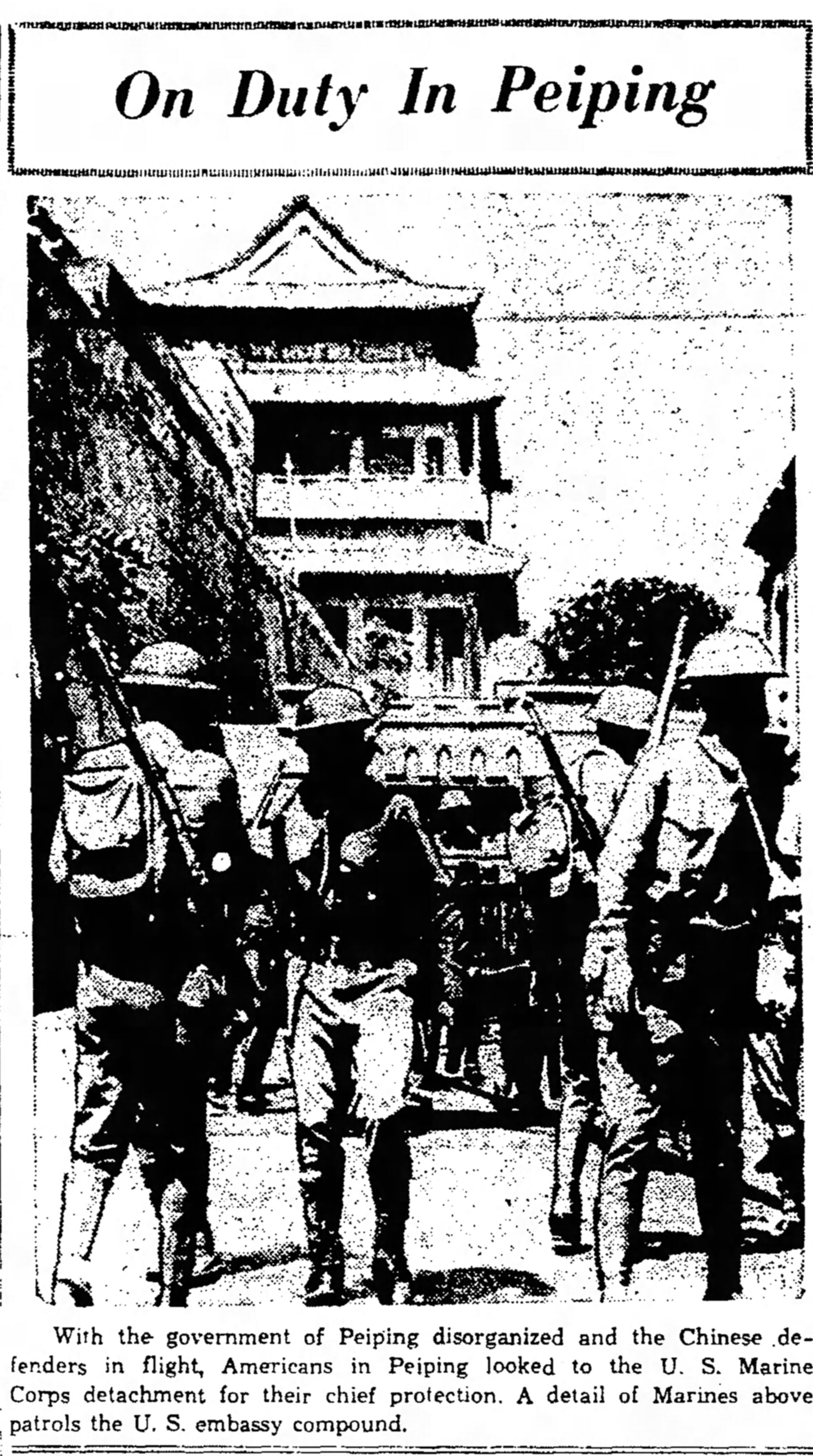
Posted: October 8th, 2016 | No Comments »
due to the high cost I’m afraid Britain’s Retreat from Empire in East Asia, 1905-1980, edited by Antony Best will have to be a library order.
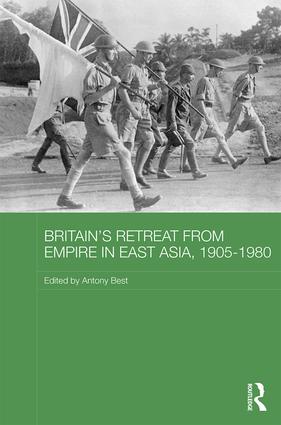
The decline of British power in Asia, from a high point in 1905, when Britain’s ally Japan vanquished the Russian Empire, apparently reducing the perceived threat that Russia posed to its influence in India and China, to the end of the twentieth century, when British power had dwindled to virtually nothing, is one of the most important themes in understanding the modern history of East and Southeast Asia. This book considers a range of issues that illustrate the significance and influence of the British Empire in Asia and the nature of Britain’s imperial decline. Subjects covered include the challenges posed by Germany and Japan during the First World War, British efforts at international co-operation in the interwar period, the British relationship with Korea and Japan in the wake of the Second World War, and the complicated path of decolonisation in Southeast Asia and Hong Kong.
1. Early retirement: Britain’s retreat from Asia, 1905-23, Antony Best.
2. Imperial Germany’s strategy in East and South-East Asia: The campaign against British India, Ian Nish.
3. Japan’s Twenty-One Demands and Anglo-Japanese relations: diplomatic negotiations and newspaper reports, T. G. Fraser.
4. Britain, intelligence and Japanese policy towards Siberia, 1917-22, Antony Best.
5. Britain, the League of Nations and Russian women refugees in China in the interwar period, Harumi Goto-Shibata.
6. Defending the Singapore strategy: Hankey’s Dominions’ tour 1934, Ann Trotter.
7. Conquering press: Coverage by The New York Times and The Manchester Guardian on the Allied occupation of Japan, 1945-1952, Roger Buckley.
8. In search of regional authority in South-East Asia: The improbable partnership of Lord Killearn and Malcolm MacDonald, 1946-48, A. J. Stockwell.
9. Anglo-American relations and the making and breaking of the Korean phase of the 1954 Geneva conference, Robert Barnes.
10. A withdrawal from Empire: Hong Kong-UK relations during the European Economic Community enlargement negotiations, 1960-63, David Clayton.
11. From Vietnam to Hong Kong: Britain, China and the everyday Cold War, 1965-67, Chi-kwan Mark.
12. Towards ‘a new Okinawa’ in the Indian Ocean: Diego Garcia and Anglo-American relations in the 1960s, Yoichi Kibata.
Posted: October 7th, 2016 | No Comments »
An interesting article in The Beijinger by Jeremiah Jenne which looks back at the disaster of urban planning and built heritage preservation that is Beijing 2016. It also rightly points out that it didn’t have to be this way. Advanced planners had better ideas about the city – Liang Sicheng and Chen Zhanxiang to be precise. But Mao, in thrall to the Soviet Union’s planners at the time, was not having any of it.
Now Beijing is making a bad thing worse by moving the city government to the suburban satellite town of Tongzhou in the hope of integrating the city with nearby Tianjin and the surrounding area currently part of Hebei province into a massive metropolitan center known as Jing-Jin-Ji. Tongzhou itself had its historic and architrecturally interesting frature most of which one can safely assume are now going wholesale. Indeed, perhaps the worse option of old, the famous China ‘New-Old’ style will appear – recent visitors to Tongzhou confirm this is happening as do the masterplanners schematics. Below you can see the ‘New-Old’ crowded to the edge.

But, of course, it could have all been different. In January 1936 Peking’s municipal government banned buildings higher than two storeys. This had been a long running argument in the city, wary of its skyline becoming a version of Tientsin or, God forbid for traditionalists, Shanghai. Foreign preservationists, like ETC Werner, had successfully won arguments about new buildings having to feature traditional roofs and eaves. The Kincheng Bank (founded 1917 in Tientsin and with branches all over China and Hong Kong) had to demolish their eight storey building. However, I don’t have a photograph of that building (does anyone?). I’m also not sure if it ever was ‘altered’ from eight to two storeys? Of course the war intervened and no major construction happened in Peking from July 1937 through to 1949 really so after his takeover of the city Mao had a low level
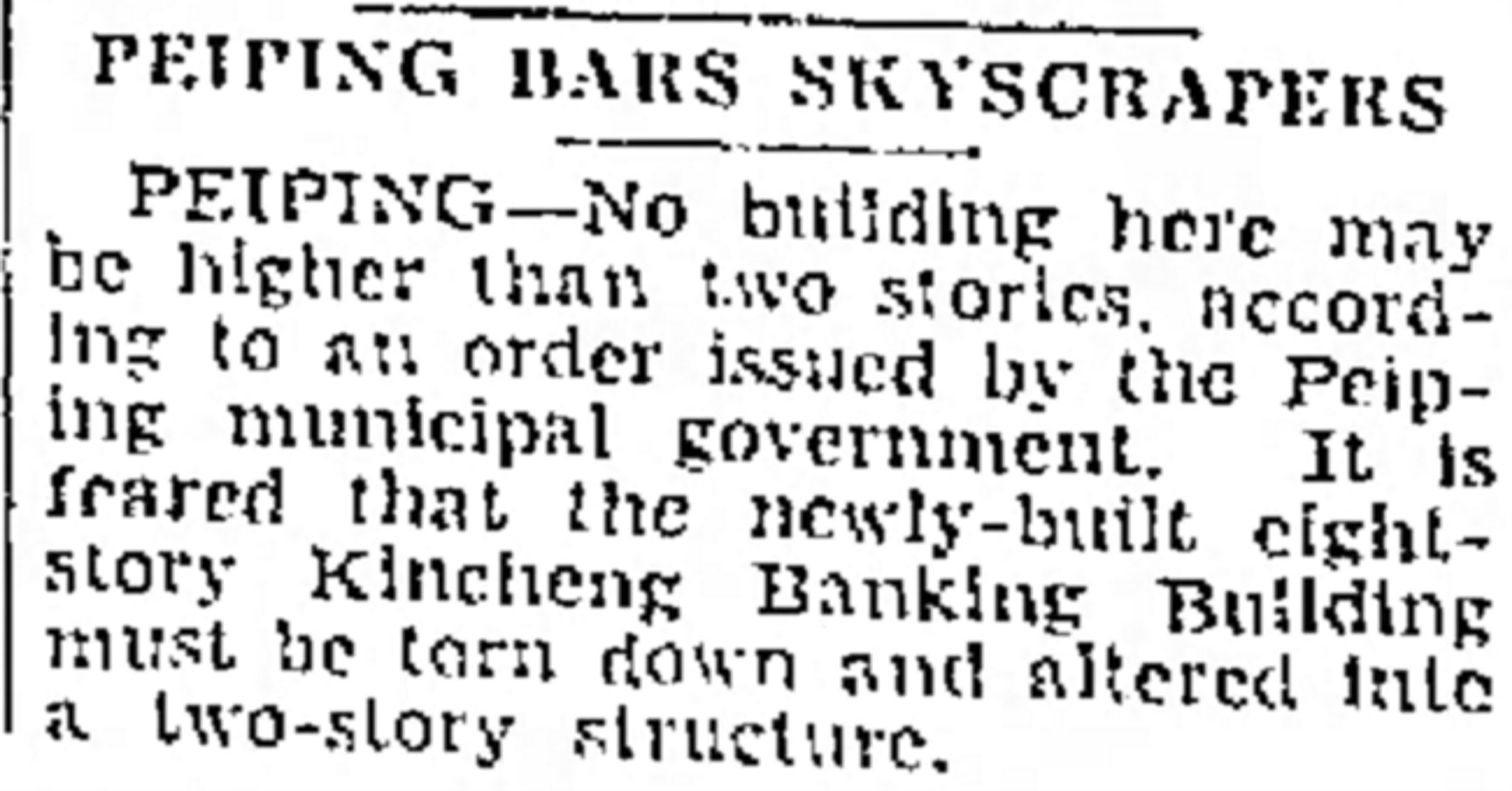
Posted: October 6th, 2016 | No Comments »
I wonder how long this ban lasted!! General Sung Cheh-yuan (Song Zheyuan) certainly thought that ‘educated men and foreign guests – he rightly assumed the two were not necessarily interchangeable terms – shouldn’t see soldiers smoking. Actually his desire to have the army respected was probably a good one seeing as this was January 1937. Sung himself was not quite a warlord dictator but he did fight some great battle against the encroaching Japanese (not that any Communist Party history will have much good to say about him, if anything at all) – he led the 29th Army in the Defense of the Great Wall in 1933. He died in 1940. Whether or not any soldiers were caught smoking on Peking’s streets and court martialled I’m afraid I don’t know.
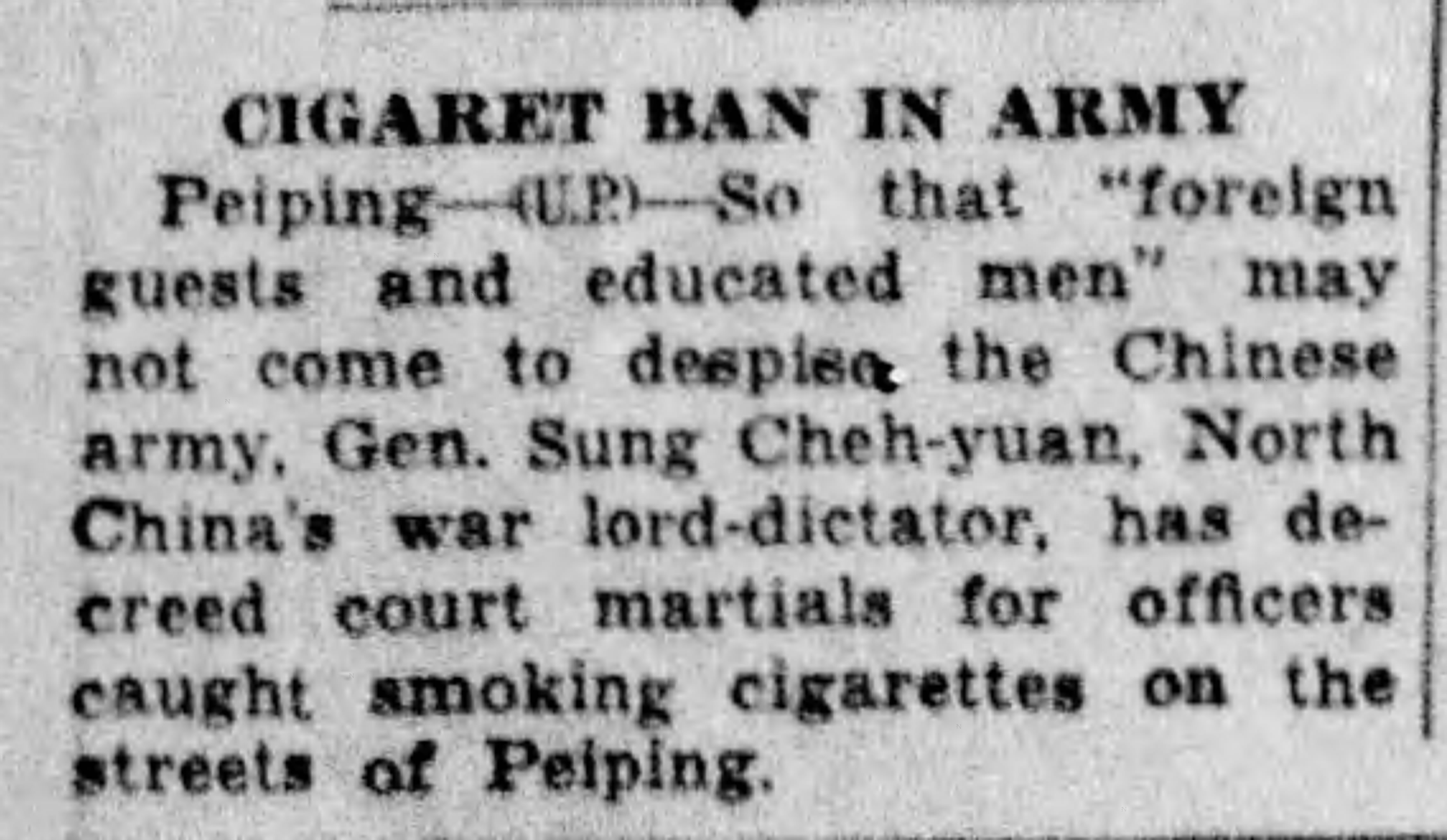
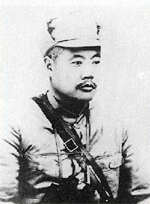
General Sung Cheh-yuan











